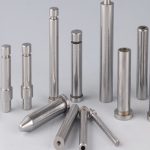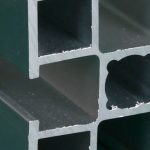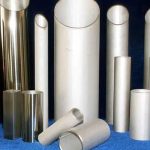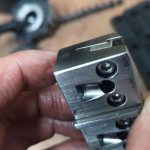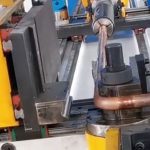Notice: Undefined index: sith_hide_share in /www/sites/alloy.wiki/index/wp-content/themes/likegoogle/single.php on line 32
Deprecated: get_settings is deprecated since version 2.1.0! Use get_option() instead. in /www/sites/alloy.wiki/index/wp-includes/functions.php on line 4862
Medium Power CO2 Lasers Serve A Variety Of Applications
Over the past two decades, seal-off CO2 lasers have been used in a wide variety of applications, such as packaging, textiles, microelectronics manufacturing, display fabrication, and more. This is because the efficiency, quality, and reliability of CO2 laser processing make it an affordable tool that is more cost-competitive than other manufacturing techniques. This article briefly introduces the key advantages of the seal-release slat discharge CO2 laser and covers recent innovations in related technologies.
Next, the article also introduces the most important application areas for lasers with powers ranging from 100W to 500W.
Why Use A CO2 Laser?
CO2 lasers are unique compared to common industrial lasers in that they output in the form of long-wave infrared, typically 10.6μm. Many organic materials absorb these long wavelengths very well, including paper, wood, plastic, rubber, textiles and leather. Certain materials that are transparent to visible light (and even near-infrared) can even absorb these long wavelengths, such as glass and sapphire.
The high absorption rate means that most of the laser power is actually used to process the material in the photothermal process. The target material heats up very quickly at this point and eventually evaporates (essentially vaporizes). This process is very energy efficient, so CO2 lasers are the most suitable tool for rapid removal (eg fast cutting, drilling, engraving) of larger volumes of target material with precision levels of 10’s to 100’s microns. At lower power levels, efficient localized heating causes color changes due to thermal effects, ideal for marking.
Slat Discharge Technology
The market for CO2 lasers is broadly divided into two categories. The first is heavy industrial operations (such as cutting and welding thick metals), which typically employ fast-flow CO2 lasers that output several kilowatts of power. Speed is often a more important issue than cut quality, so lasers for these types of applications use high power, potentially sacrificing beam quality, laser size, and cost of ownership.
The second market is the precision machining of glass, ceramics, plastics, textiles, wood and other organic materials, usually done with lasers with powers up to 1kW. At this point, cut quality and shape (no signs of scorch) are critical. Minimizing the size and weight of the overall system is often a top priority, as this keeps operating costs low.
Slat discharge lasers first appeared about two decades ago, dedicated to better serving the second market. In the sealed-off type slab discharge laser, the plasma inside the resonator is excited by two rectangular slab electrodes. The cylindrical total reflection mirrors at both ends form a resonant cavity, and part of the power in the cavity will couple out the laser light through the gap of one of the cylindrical mirrors. The electrodes are cooled by cold water, and the large area and sealed space of the electrodes allow them to efficiently cool the plasma without any gas circulation.
Slat discharge construction is advantageous in precision machining applications for a variety of reasons. Such constructions are small in size, high in stability, have good output characteristics and have a low cost of ownership.
The output power can be scaled with the area of the slat electrodes. As a result, the slab discharge CO2 laser is very compact and the highest possible output power can be achieved with a relatively lightweight laser head. As a result, they can be easily integrated into robotic arms or hoisting frames, or even small enough to fit on a tabletop. The slatted electrode configuration is also mechanically durable and therefore works stably in the short and long term. This stability enables uniform processing results that do not change over time.
When coupled with suitable beam conditioning optics, the slat discharge configuration can form a low M2 (<1.2) high quality Gaussian beam. This translates directly into the ability to achieve a smaller focused spot, since nearly all of the laser power is concentrated in the center beam. The end result is a more precise cut or faster cutting speed, a smaller heat affected zone (HAZ) and the most efficient use of laser power.
The high cutting efficiency of the slab discharge laser also minimizes power consumption at a given processing speed. Also, the cooling water is provided through a closed loop system, so no water source is required. Eliminating the need for an external gas supply eliminates all costs associated with handling and storing gas tanks, as well as downtime associated with replacing gas tanks. Due to these factors and the high availability of the design, slab discharge lasers have the most attractive cost of ownership of all CO2 laser types in this power range.
Optimizing Slat Discharge Lasers
Coherent has been producing slat discharge CO2 lasers since the initial development of the related technology. Our DIAMOND laser range continues to evolve, with recent innovations further improving processing results and lowering the cost of ownership. For example, a slab discharge laser can generate pulses that rise and fall relatively quickly. This pulse is fully optimized in the DIAMOND laser, resulting in a near square wave pulse with the highest possible pulse frequency. This is important because square pulses provide total pulse energy greater than the material processing threshold, increasing processing efficiency and speed while reducing HAZ for high-quality edge cuts.
Recently, DIAMOND J-series and E-series products have integrated RF power supply inside the laser head, avoiding the usual RF wires for connection. This reduces system cost and eliminates a source of failure for the laser, and also avoids accommodating relatively stiff thermal cables within the laser system mechanism.
The latest DIAMOND J series improves many aspects of the plasma tube. The new electrode design includes ceramic insulators and a new cooling structure for more efficient cooling, reducing thermal cycling, resulting in longer life cycles and more stable mode output. Another innovation is the use of a new type of igniter, which reduces the stress of plasma ignition and extends the entire life cycle of the plasma tube.
The design of the extracavity beam conditioning optics reduces aberrations and reduces the beam ellipticity below 1.2. Circular beams are suitable for highly precise applications, as beam asymmetry may cause differences in cutting in orthogonal directions. And the low divergence of the output beam (less than 2mrad) often eliminates the need for beam expanders in the delivery optics, reducing costs for system builders.
The Typical Application Of Medium Power CO2 Lasers
An important application area for medium power CO2 lasers is the packaging of consumer products. These include cutting, perforating, scoring and marking of various materials such as paper, cardboard, plastic and metal foils, as well as stacks of these materials. Lasers are often superior to traditional tools such as straight coulters, die boards, etc. for a variety of reasons. Laser processing can be fast, so it can be adapted to the speed of existing production lines. Laser processing is a flexible, digital (software-controlled), non-contact process, so it doesn’t change over time and doesn’t require replacement or rerubbing like a mechanical tool. Furthermore, lasers can precisely control the depth of cutting or drilling, which is more difficult for mechanical tools. And, because of the low cost of ownership and high reliability of processing with a sealed-off CO2 laser, it is more economically competitive than traditional methods.
The infrared absorption spectrum of most polymer films used in packaging applications includes many peaks. Therefore, small shifts in the laser wavelength can have a huge impact on the absorption efficiency. Also, since the films involved in packaging are very thin and typically absorb only a small fraction of the incident laser power, a small increase in absorption efficiency can result in a large increase in processing speed and efficiency. Therefore, while CO2 lasers with traditional 10.6 μm wavelength are most commonly used in packaging applications, CO2 lasers with an output of 10.2 μm have been shown to be effective in some plastic materials, especially polypropylene and biaxially oriented polypropylene (BOPP). Faster processing and better results. Likewise, for polyimide (PI), silicone, trichlorinated polyethylene (PET), polypropylene (PP), and polystyrene (PS), the output is 9.3 μm CO2 lasers exhibit faster processing speeds and superior results. Coherent produces J-Series CO2 lasers with a choice of 10.6μm, 10.2μm or 9.3μm output, specifically designed to meet the needs of these applications.
Another important use for CO2 lasers is in cutting thin sheets of glass used in displays for smartphones and other handheld devices. Traditional mechanical cutting is not suitable for cutting glass plates with a thickness of less than 1mm. In particular, mechanical cutting can produce edge chipping, chip formation, and can leave significant mechanical stress, making the glass more susceptible to shattering. All these problems necessitate further post-processing, which is bound to take time and increase production costs.
Cutting glass with a CO2 laser is a non-contact process that completely eliminates chipping and chipping problems. Moreover, laser cutting does not inherently cause residual stress to the glass, which increases the edge strength of the glass, which makes laser cutting glass 2 to 3 times more stressful than mechanically cutting glass.
In the technique of laser scribing, the CO2 laser beam is focused on the surface of the glass and then moved to achieve continuous cutting. The 10.6 μm light used causes localized rapid heating. Next, a jet of liquid or gas can be used to rapidly cool the glass, creating continuous cracks in the glass that are typically about 100 μm deep. The glass is then passed under a mechanical drum or chopper bar to split the glass along the corresponding crack lines. This segmentation method produces no debris and is perpendicular to the surface.
Smartphones, tablets, and TV flat-panel displays are also getting brighter and higher resolution while costing less than ever. The key technology to achieve this is the use of advanced polarizing films. Specifically, in LCD-based displays, display contrast ratio, viewing angle, resolution, and brightness are ultimately limited by the quality of these polarizing films. Conventional mechanical (blade) cutting polarizing films once again shows various limitations, while CO2 laser cutting can gradually reduce production costs and improve equipment quality.
The main disadvantage of mechanically cut polarizing films is the extensive post-processing required. Specifically, post-processing includes sanding edges and cleaning up cutting debris. Another limitation of mechanical cutting is the low process utilization. Polarizing films in particular are typically cut from a large roll of film into smaller rectangles with rounded corners. Such rounded corners cannot be produced by a series of transverse and longitudinal straight cuts on the roll film, so conventional slitters etc. cannot be used. Not to mention, the graphics of each shape must be cut individually, leaving a small amount of unused material between the cut graphics.
CO2 laser cutting solves the above two problems. In particular, these cuts have better edge quality and do not generate large amounts of contaminating particles. With scanning optics, rounded cuts can be achieved without stopping the roll. Laser cutting creates a narrower cut than mechanical cutting, resulting in better overall cutting precision across the entire width of the roll. In this way, the cut patterns can be nested more closely together, reducing waste of expensive polarizing film.
A final notable application of medium power CO2 lasers is the drilling of low temperature co-fired ceramics (LTCC). Such materials are increasingly used in microelectronic substrates, especially for the construction of multilayer thin devices such as flash RAM. LTCC consists of a layer of green (unburned) ceramic, typically between 50 μm and 250 μm in thickness, with a lower layer being a layer of trichlorinated polyethylene (PET) tape about 40 μm to 60 μm thick.
For circuit tracing, the tape layer is screen printed with conductive material. At this point, so-called “via” holes are made to make electrical connections between the layers or to conduct heat through the layers. After the vias are made, the carrier film is removed for lamination and firing.
These vias are typically about 100 μm in diameter; generally, it is not cost-effective to mechanically drill or punch holes of this size at the desired ratio. Therefore, almost all via drilling in LTCC is now done with CO2 lasers.
This type of via drilling is usually done through a PET carrier, and the laser has the advantage of not melting large amounts of PET, and can also create recast rings that adhere to the ceramic, making it difficult to drill them without damaging the substrate. The base and the substrate are separated.
The absorption capacity of PET for the wavelength of 9.3 μm is much higher than that of the wavelength of 10.6 μm, and the absorption capacity of the ceramic itself is very strong for both wavelengths. Therefore, the shorter laser wavelengths can be absorbed and cannot travel very far through the material. This reduces the melting zone and reduces adhesion, so the carrier can be cleanly removed from the ceramic.
All in all, medium power (100W to 500W) CO2 lasers are economical and provide better results and are now widely used for cutting, punching, marking and drilling. Recent advances in slat discharge design further improve the reliability and performance of mid-power CO2 lasers and further reduce their total cost of ownership.
Link to this article:Medium Power CO2 Lasers Serve A Variety Of Applications
Reprint Statement: If there are no special instructions, all articles on this site are original. Please indicate the source for reprinting:Alloy Wiki,thanks!^^


